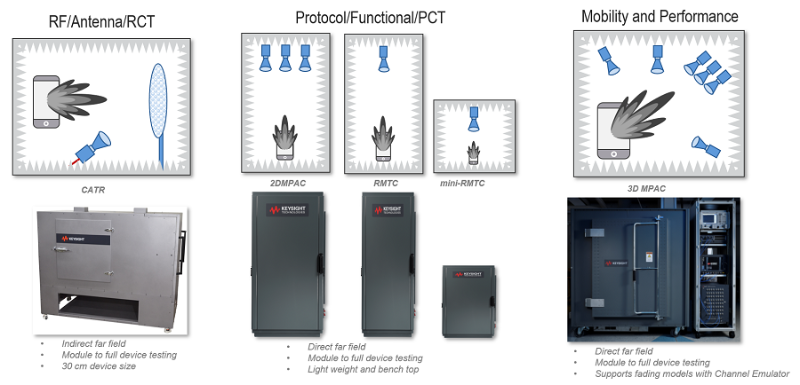
Brooklyn 5G Summit 2019: From 5G mmWave to 6G Sub-THz Frequencies
In the midst of the 5G mobile network rollout, the mobile communications industry is starting to look beyond 5G (B5G). NYU Wireless, founder and host of the Brooklyn 5G Summit for the past six years, is looking to pave the way for cellular technology’s evolution to 6G.
The exclusive event, with strong attendance from the research community, provided a balanced view of the current state of 5G, next steps necessary to advance the technology, and a glimpse into 6G. The summit also spanned various technical disciplines such as millimeter-wave (mmWave) and terahertz (THz) spectrum, non-terrestrial communications, deployment challenges, and artificial intelligence (AI).
Key themes on the agenda for the event, which took place last week, included future standard releases (Rel-16 through Rel-18), massive multiple input, multiple output (MIMO), machine learning, network slicing, and THz communications. This blog focuses on mmWave and THz communications.
The Continuous Pursuit of Wider Bandwidths
This year was the first year in which B5G and 6G were actively discussed at the event. The Federal Communications Commission (FCC) recently decided to open sub-THz spectrum for experimentation. This decision has fueled industry discussions around sub-THz frequencies for 6G.
5G new radio (NR) standards’ frequency range 2 (FR2) refers to mmWave frequencies. It ranges from 24.25 to 56.2 GHz. Sub-THz spectrum for 6G would range from 95 GHz to 3 THz. While FR2 is touted to potentially extend to 114.25 GHz in the future, there was consensus at the summit’s Next Steps for 5G panel that frequencies for 5G would not go beyond 100 GHz, and those above 50 GHz would be reserved for backhaul applications.
Spectrum availability at mmWave and sub-THz frequencies is the driving force behind the move to higher frequencies for cellular technology. 5G NR FR2 includes multiple operating bands from 257 to 511. These new mmWave bands offer wider channel bandwidths that enable high-throughput applications. mmWave bands have a maximum channel bandwidth of 400 MHz with even higher channel bandwidths possible later.
However, 5G data rates are still not fast enough for augmented reality (AR) and virtual reality (VR) applications. The rapid evolution of computer technology also requires faster communications. THz frequencies provide the wider bandwidths needed to enable faster speeds and give rise to real-time connections between the physical, digital, and biological worlds. 6G will continue the evolution of cellular technology to higher frequencies and become the sixth sense Nokia’s CEO Rajeev Suri referred to in his opening keynote presentation.
Overcoming 5G mmWave Challenges
Leading operators including Sprint, AT&T, NTT DOCOMO, and South Korea Telecom (SKT) reiterated aggressive deployment plans for commercial 5G networks at the summit. Although talks about 6G and THz communications have begun, participants in the mobile ecosystem are currently very focused on overcoming the challenges of 5G, particularly those coming from mmWave frequencies.
Due to mmWave frequencies, 5G devices and base stations (gNBs) need to use different architectures like phased array antennas. These architectures cannot support conducted connections, forcing a change in test methods to radiated testing.
Also known as over-the-air (OTA) testing, radiated test methods introduce much more path loss than conducted test methods. Device makers and network equipment manufacturers (NEMs) need test solutions to address this issue and accelerate their time to market.
Common radiated test methods include direct far field (DFF), indirect far field (IFF), and near-field scanning (NFS). OTA test solutions are available spanning the device and gNB workflows.
Figure 1 provides an overview of OTA solutions for mmWave devices across the workflow.

Figure 2 provides on overview of OTA solutions for gNBs across the workflow.

Looking Beyond the 5G Mobile Network Rollout
As the mobile communications industry works to bring 5G to enterprises and consumers, 6G will develop in parallel. It takes about 14 years for a new cellular technology to go from applied research to commercial deployment.
Keysight Technologies, a long-time supporter of NYU Wireless’ research efforts in advancing mobile communications, will again partner with the university to explore THz frequencies and other technical aspects for 6G. In October 2018, Keysight donated an array of cutting-edge test equipment to the research center. This was the largest in-kind gift to NYU’s Tandon School of Engineering to date.
For more information on 5G-related hot topics, consider joining us at Keysight World next month. Click here to see the agenda for the 5G track.